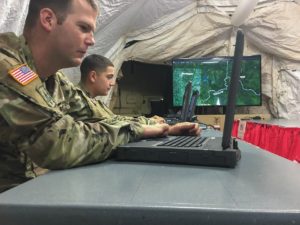
Palantir Technologies [PLTR] said Tuesday the company will deliver an intelligence data fabric and analytics foundation solution to the Army as part of its work on a competitive $823 million program to upgrade the service’s battle command intelligence system. Following a successful initial testing period, Palantir said it will deploy its Gotham platform for final testing and fielding for the next phase of the Army’s Distributed Common Ground System-Army (DCGS-A) Capability Drop 2 (CD-2) contract. “We look forward to the…

 By
By 











